How To Identify Animal Tracks In South Lake Tahoe
Identifying Animal Tracks in Snowfall – five Common Lawn Species
While tracking in the snow can exist fantastically like shooting fish in a barrel, it tin likewise be deceptively tricky. Everything you know about tracks gets upended when the tracks are subconscious at the bottom of deep leg holes in deep snowfall. Additionally, tracks tin can go distorted and aggrandize dramatically as snow melts. In deep, melted snowfall I've actually seen people error squirrel tracks for those of a bear!
While trackers usually depend upon the details in each track (similar the number and shape of the toes or the presence of claws) to make identifications, in snow it is often necessary to look for other clues. Gait patterns are i of the all-time tools to ID tracks in the snow and some species are easily recognized from a distance only by the pattern of tracks. Researchers have even conducted wildlife surveys in snow by identifying the tracks of larger animals from small airplanes!
The best way to get started with tracking in the snow is to first learn the well-nigh mutual species you're likely to encounter. Here are 5 that seem to be in everyone's backyard. If you're interested in seeing tracks of more than species, you lot tin can check out my iPhone and Android tracking apps here.
Rabbits
Rabbit tracks are one of the most ordinarily seen later on a snow. Look for the repeating bound patterns. Each group of 4 tracks tends to form a tall, thin rectangle. Squirrel leap patterns tend to be much more blocky. Rabbits as well have small-scale round toes and fur covered feet while squirrels have long fingers.

A cottontail bound pattern. The hind feet are at the top and the fronts are at the bottom.

A cottontail bounds toward the photographic camera.
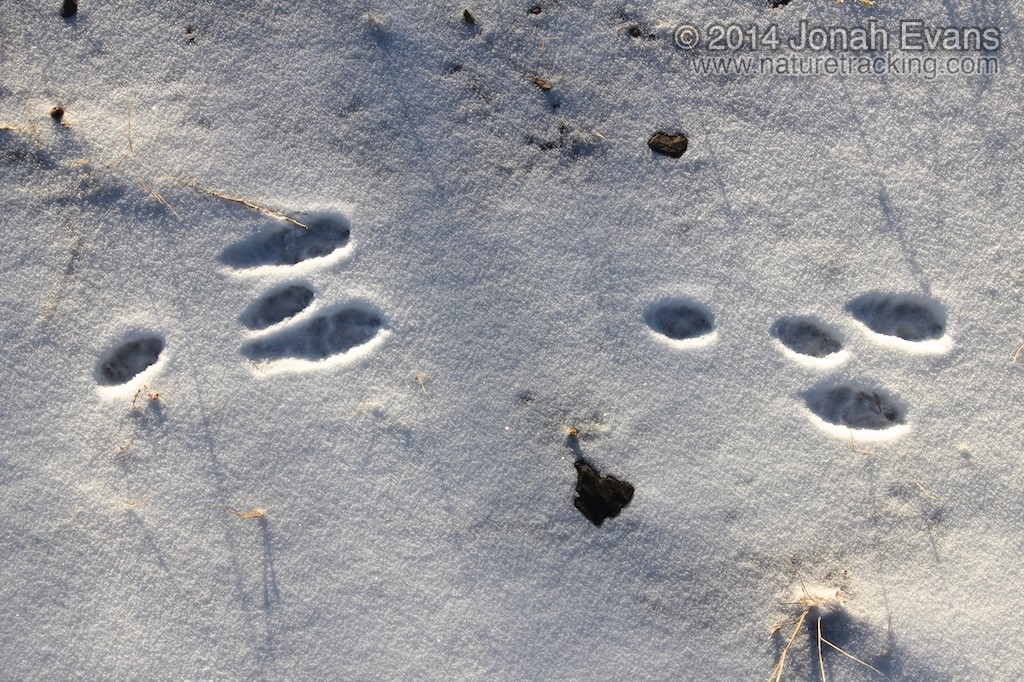
A cottontail bounding to the right.
Squirrels
Squirrels take a wide and blocky bounding blueprint when compared to rabbits. If tracks are clear yous may meet the long skinny toes. Follow their tracks and they will somewhen atomic number 82 to a tree or other construction for them to climb.
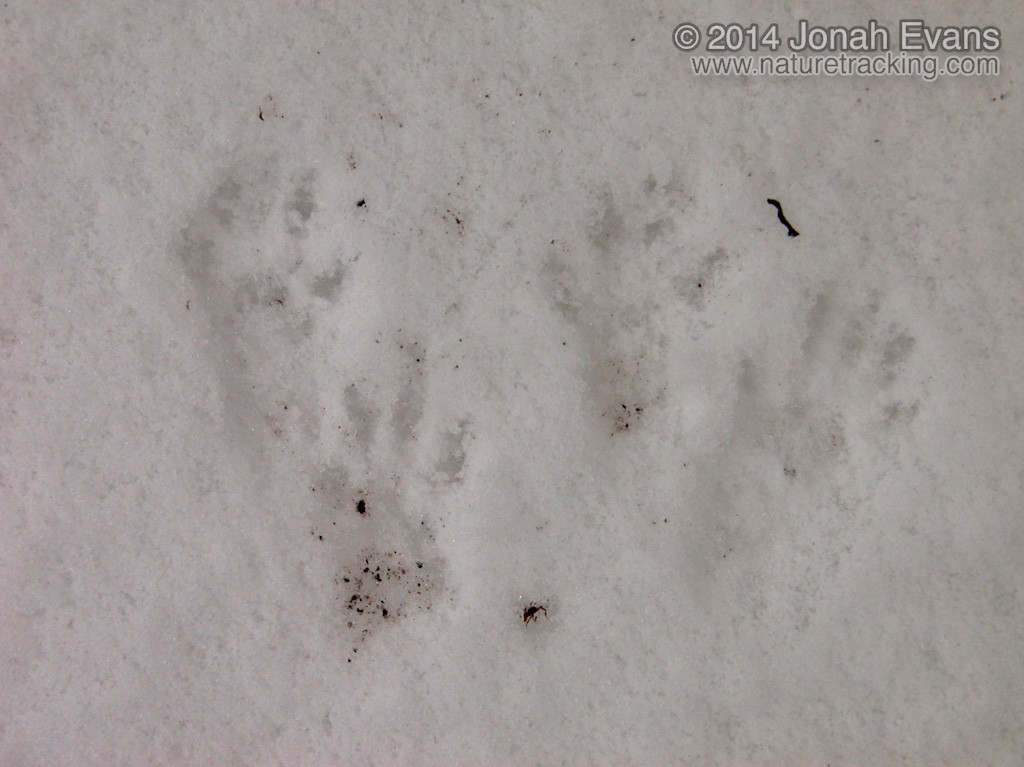
Red squirrel tracks in snow. The 5-toes hind anxiety are to the outsides and the 4-toed front feet are on the inside.
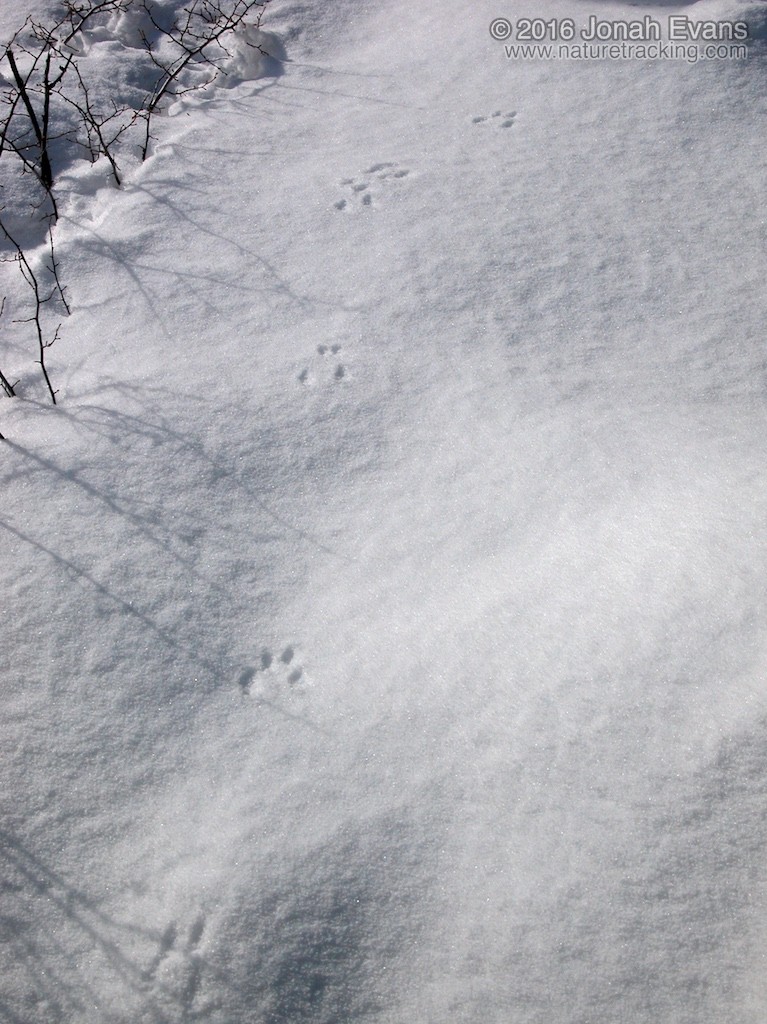
The blocky bounding pattern of a red squirrel in snow heading toward the camera.
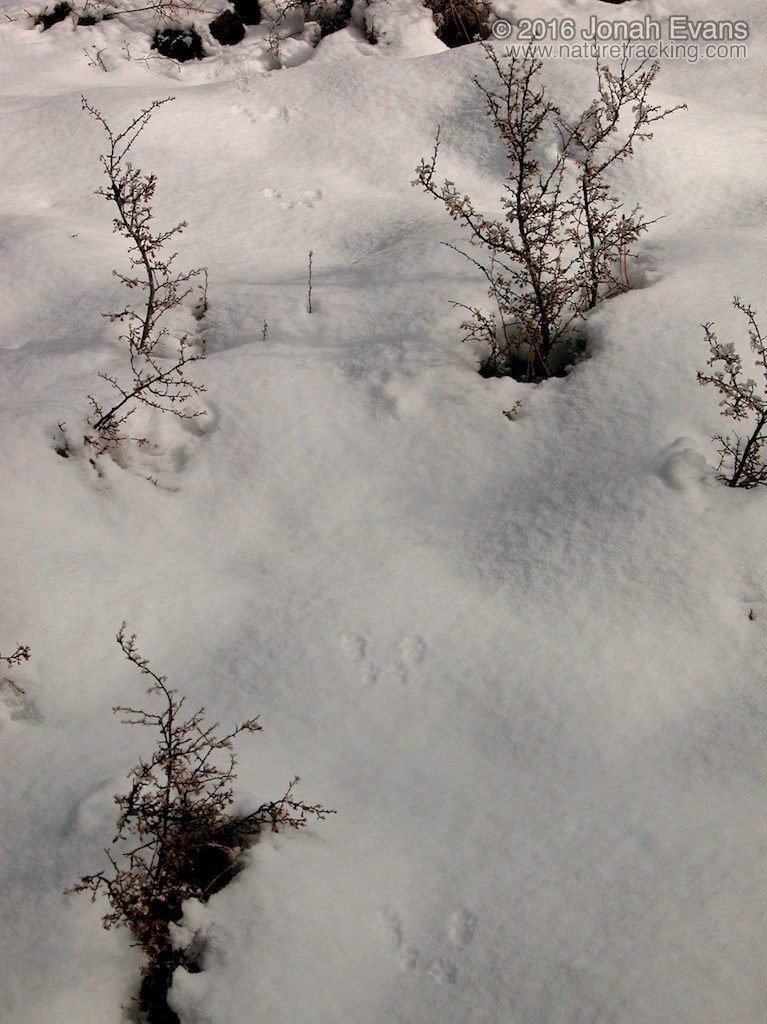
Tracks of a western gray squirrel bounding away.
House cat
House cats are everywhere. I've seen their tracks in places surprisingly far from people. They have 4 toes on their forepart and hind anxiety and tend to direct annals walk (hind feet landing in the front tracks) when walking in snow.

House true cat tracks in snow. The right front end human foot (below) was stepped on by the right hind.
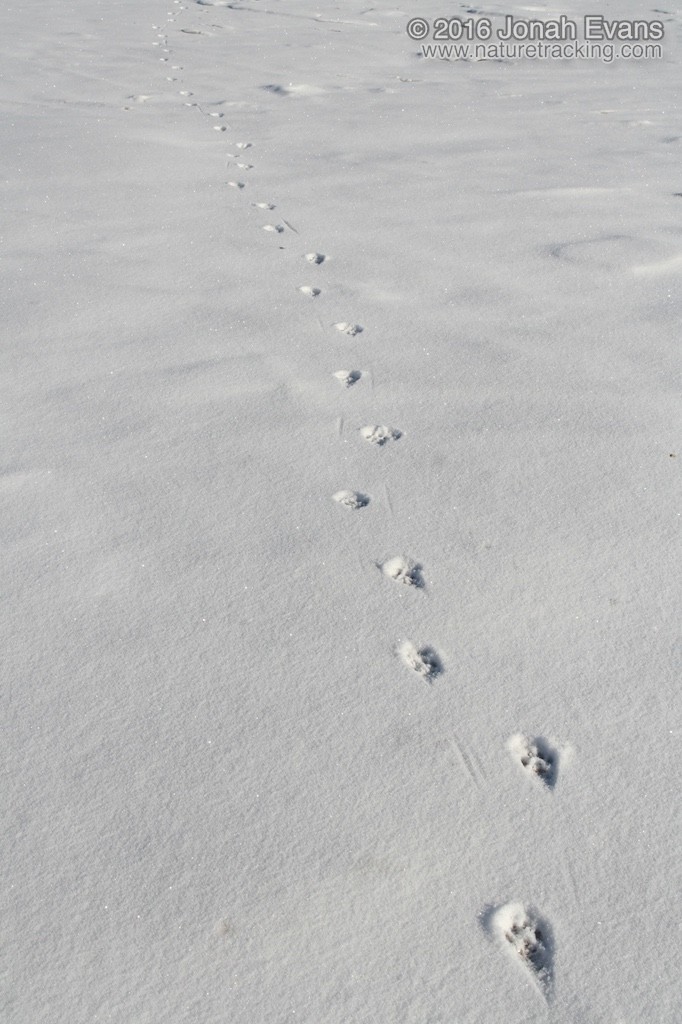
The zigzagging tracks of a house cat walking away.
Domestic Dog
Domestic dog tracks are often misidentified as mountain lions. Look for 4-toes on each pes, claws that ordinarily (only not always) testify, and a triangular shaped heel pad. Dog heel pads tend to be adequately minor (about the size of 3 of their toes) while cat heel pads tend to be larger (about the size of four toes).

Tracks of a coyote (on left) and a domestic domestic dog on right.

A dog galloping in snow. Note that the claws don't always show in dog tracks. Tracks from correct to left are: LF, RF, LH, RH.
Deer
Deer tracks are usually piece of cake to identify. Even so, their hind feet tend to pace on meridian of their front tracks leaving distorted and confusing marks. In deep snow even deer tracks can be tough to identify.
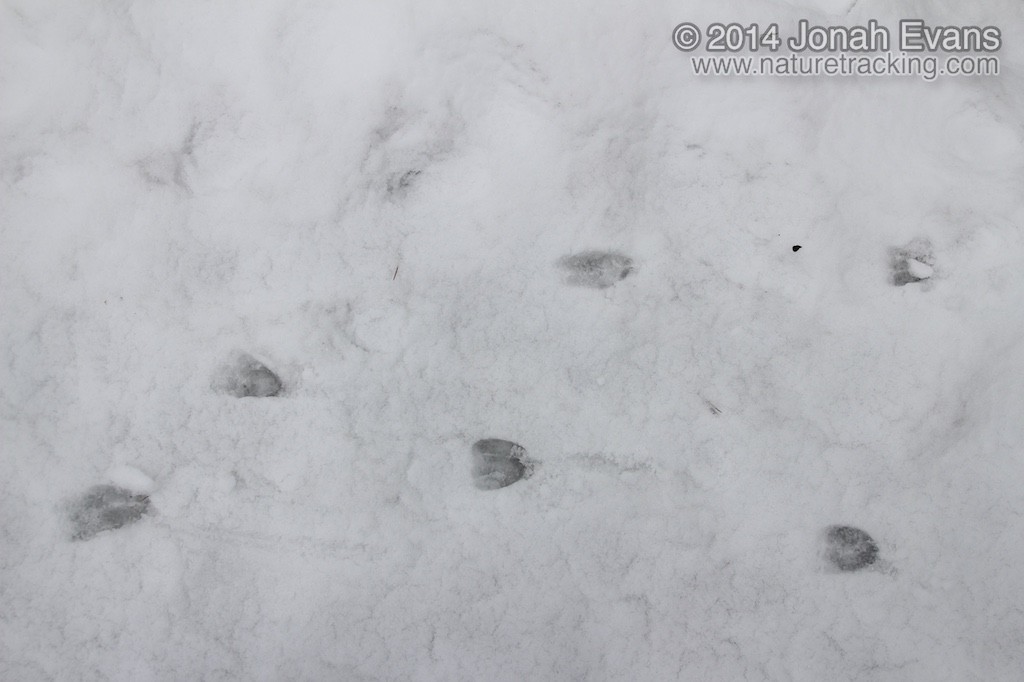
Eye-shaped deer tracks in snow headed to the correct.
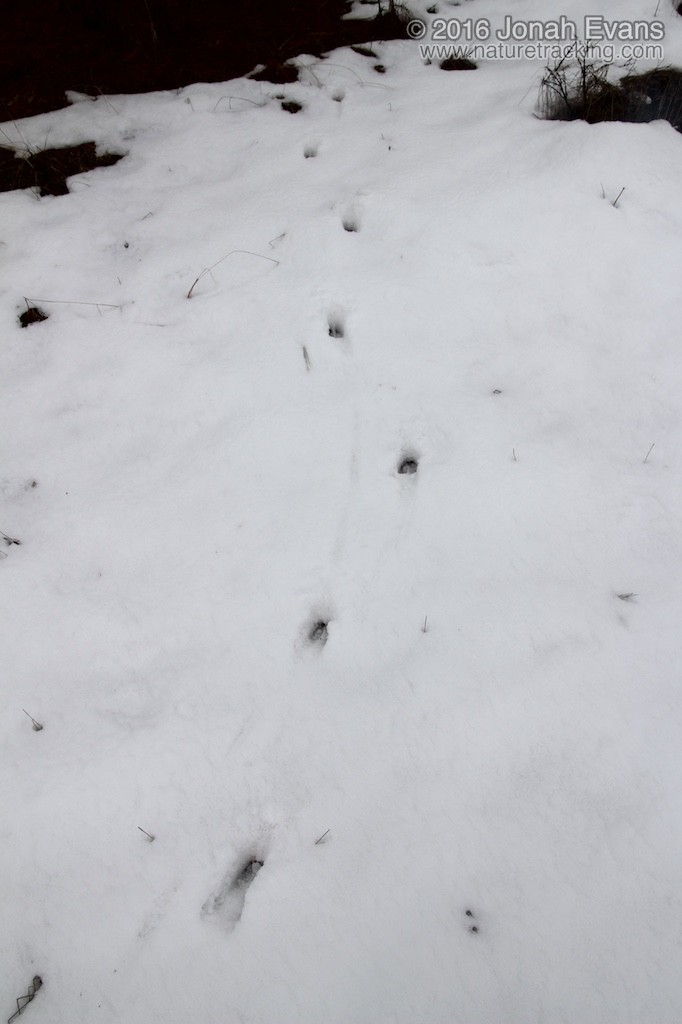
Deer tracks in snow.

Deer Tracks in Deep Snow
Hopefully this gets you lot started. Other mutual backyard species include greyness fox, red pull a fast one on, raccoon, opossum, and mice. Savour the snow!
Source: http://www.naturetracking.com/the-5-most-common-animal-tracks-in-snow/
Posted by: camposbaccomithe.blogspot.com

0 Response to "How To Identify Animal Tracks In South Lake Tahoe"
Post a Comment